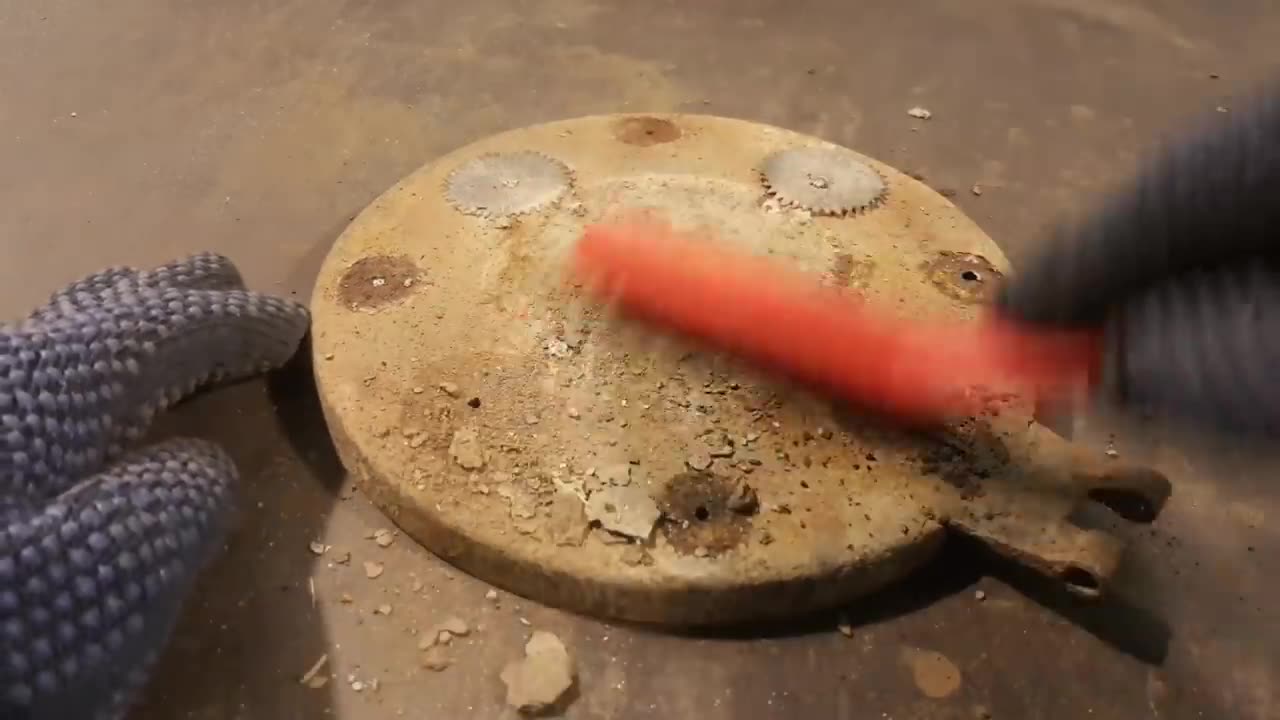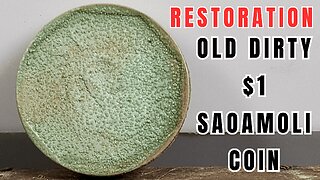Premium Only Content

VERY RARE OBJECT - RESTORATION - The complete story
In areas with cold winters, such as Europe, a bed warmer or warming pan was a popular home item. This device was widespread in more well-to-do people's homes in the late 1700s and early 1800s but eventually became obsolete due to changes in fireplace design and the obviously frequent fires that occurred, killing the sleeper more frequently than not. I'm sure there have been some incidences of people's feet being burned as well. When the damage occurred, such a rare artefact must have been utilised for a long time before being set up as a showcase. [requires citation] It was made up of a metal container with a handle, formed like a modern frying pan, and a metal lid. Lids that are solid or finely perforated. To warm it up or dry it up before use, the pan would be filled with coals and placed beneath the covers of a bed.
Aside from the danger of fire, the embers' vapours were known to be poisonous. A doctor urged his readers to avoid using bed warmers and instead use hot sand to replace the embers if necessary.
The "bed waggon" was an alternative to the bed warmer (moine in French, Monaco in Italian, both meaning "monk"). The bedsheets were protected from direct heat by a massive wooden frame enclosing a bucket of embers, possibly with an iron tray and an iron roof plate.
Pottery that had been filled with hot water was also employed.
[needs citation] With the introduction of The hot water bottle, made of rubber, became the most popular. Electric blankets began to take their place in the early twentieth century.
A 36 cm/14inch pressed steel 'flying saucer' or lozenge-shaped device developed by Belling (founded 1912) was an alternative type of bedwarmer in the UK in the mid-20th century, powered by an inbuilt 40W incandescent light bulb as a heat source.
-
 3:35
3:35
Old Is Gold
1 month agohow to clean old coin
321 -
 2:26:29
2:26:29
vivafrei
12 hours agoEp. 270: MASSIVE SCOTUS WINS! Big Beautiful Bill! New-Scum Sues! Diddy Watch! Big Apple Rot & MORE
96K57 -
 LIVE
LIVE
EricJohnPizzaArtist
4 days agoAwesome Sauce PIZZA ART LIVE Ep. #52: GEYCK!
223 watching -
 57:30
57:30
RiftTV/Slightly Offensive
3 hours agoTHIS is Where It ALL Went Wrong.. The Rise of NEOCONS | Rift Book Club | B1E2
13.7K11 -
 5:13:57
5:13:57
Barry Cunningham
6 hours agoBREAKING NEWS: SENATE FINAL DEBATE AND DISCUSSION ON BIG BEAUTIFUL BILL
138K77 -
![🔴LIVE | [NIGHTMARE] Assassin's Creed Shadows | PT 5](https://1a-1791.com/video/fww1/30/s8/1/J/V/P/W/JVPWy.0kob-small-LIVE-EXPERT-Assassins-Creed.jpg) LIVE
LIVE
Tekavor
2 hours ago🔴LIVE | [NIGHTMARE] Assassin's Creed Shadows | PT 5
52 watching -
 DVR
DVR
Aztekin59
1 hour ago🔵🔴best weapon?🔴🔵
2.5K -
 1:17:14
1:17:14
Sarah Westall
8 hours agoPolitical Rhetoric, War and Open Borders Breeding Dangerous Extremist Cells w/ Carole Lieberman
93.8K32 -
 DVR
DVR
Josh Pate's College Football Show
5 hours ago $0.13 earnedCFB’s Team To Beat | Recruiting May Be Back | Better OR Worse In 2025 | Truth About Brent Venables
2.47K -
 43:38
43:38
Patriots With Grit
23 hours agoPoverty to Prosecutor; The Food Stamp Warrior | John Deaton
8.51K1